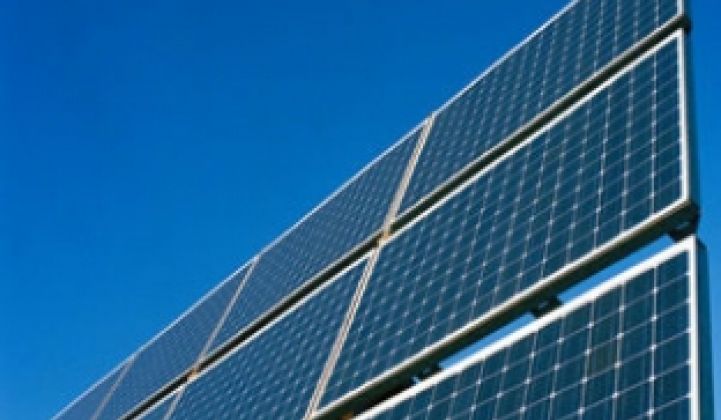Solar electricity could compete, cost wise, with other sources of electricity in parts of Southern Europe, by as early as next year, according to an industry report released Monday.
The report, conducted by the European Photovoltaics Industry Association, aims to lay out reasons for European Union lawmakers to support more solar friendly policies to achieve their greenhouse gas reduction and energy conservation goals.
The EU is aiming to reduce greenhouse gas emissions produced by countries in the EU by 20 percent from the 1990 levels by 2020. Part of the plan to achieve that goal is to rely on renewable energy for 20 percent of the overall use, as well as to reduce energy consumption by 20 percent.
If the right steps are taken by policymakers and the industry, then the European Union could get 12 percent of its electricity from solar by 2010, compared with less than 1 percent today. To achieve the 12 percent would require a wide deployment of energy storage and smart grid technologies, the report said.
"The 12% PV target is a necessary objective if the EU is to generate sufficient renewable energy to meet its 20/20/20 objectives," the solar industry association contends in the report.
The cost to produce solar electricity should fall about 8 percent each year, the report said. But at 20 euro cents to 40 euro cents per kilowatt hour, it remains more expensive than fossil fuel-generated power.
The photovoltaic industry wants to reduce the cost to below 10 euro cents per kilowatt hour for larger systems and below 15 euro cents per kilowatt hour for residential systems.
Italy, for example, could see solar electricity cost about the same as other types of power next year thanks to its abundant sunshine and high electricity prices. But cost alone wouldn't be enough to spur growth in solar energy installations, the report said.
Although Italy subsidizes solar installations, its bureaucracy has made it difficult to get permits to build them (see U.S. Solar Market: So Promising, Except for 2009).
Many European countries, including Germany, Spain, France and Greece, also have deployed their own solar subsidy programs. Those programs tend to require utilities to buy all the solar power available for sale and buy it at government-set prices that are higher than what they would pay for conventional power.
Under those feed-in tariff policies, home and business owners could potentially make a good profit from owning solar energy systems and selling the electricity to their utilities. The policies also have attracted project developers who build larger-scale projects and sell them to investors.
The report, by the way, focuses on solar panel installations and not other types of solar energy technologies, such as concentrating solar thermal. Concentrating solar thermal could make solar electricity on par with conventional power.
Solar thermal power plants use mirrors to concentrate the sunlight to heat fluids and produce steam for electricity generation. Companies such as Abengoa, Solar Millennium and Torresol Energy are building plants mainly in Spain (see Could Solar-Thermal Power Supply 25% of the World's Needs by 2050?).
Join experts and influencers at Greentech Media's Growth Opportunities in the New PV Market: Projects, Finance and Policy in San Francisco on July 13.




